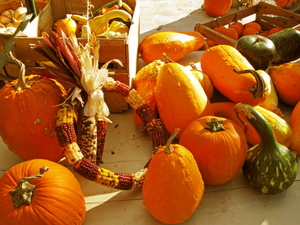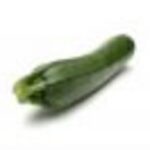According to the Virginia Cooperative Extension, butternut squash is classified as a “Winter squash,” as opposed to a “Summer squash.” As a general rule, summer squash – yellow crook-necked squash and zucchini, for example – are harvested when still slightly tender and actually immature, 50 to 60 days from planting. Winter squash require a much longer maturation season of 80 to 140 days and fully mature on the vine, developing a hard rind that allows for storage in cellars.
Winter squash are further categorized by size, such as small, intermediate, large and jumbo. Squash size and the length of time required to mature for harvest are proportional. Butternut squash are considered “small,” from 1 to 4 lbs., although when you have to purchase them by weight in a grocery store they seem much, much larger.
Luckily, however, these butternut squash are the fruits of your labor in your backyard garden. You babied them through germination and waited to transplant the seedlings until the threat of frost was past and both the soil and air temperatures were consistently above 60* F. What little – if any – insecticide you used, you applied late in the evening to avoid killing bees. Although unrecognized for their contributions, you wouldn’t have the squash vegetable to harvest if it wasn’t for their efforts in transferring pollen from a squash plant’s female flowers to the male flowers.
Your butternut squash survived mildew, blight and wilt as well as a host of insect infestations. You watered when it was dry, fertilized liberally, and hoed weeds to limit competition for water and nutrients. As your early producing vegetables have come and gone, your larger squash have taken over that unused area to sprawl about.
As noted above, winter squash are allowed to ripen on the vine, which will then begin to dry and twist. Between the vine drying and the first frost is when you’re going to want to harvest your crop. Winter squash are picked when they reach a deep color and the rind hardens. For your butternut squash, they should be almost the precise color of “flesh” in the old Crayon box, before they began to be labeled politically correctly. Don’t be fooled by the neutral, bland color. The interior will be a brilliant pumpkin orange. Unlike the “acorn” shape of its cousin, the butternut squash more has elongated a bit to show its gourd genes. The rind should be hard and difficult to mark with a fingernail.
When harvesting, be careful to cut the vine 2 to 3″ from the butternut squash, so as to promote better storage quality over the winter. Although they seem indestructible, handle them carefully to prevent bruising which can also decrease the length or quality of storage.
Butternut squash can be stored in a cool, dry cellar for the winter. Alternate preservation methods include canning and freezing.
Sources:
Cucumbers, Melons and Squash, Virginia Cooperative Extension
http://www.pubs.ext.vt.edu/426/426-406/426-406.html
http://urbanext.illinois.edu/veggies/wsquash.cfm





